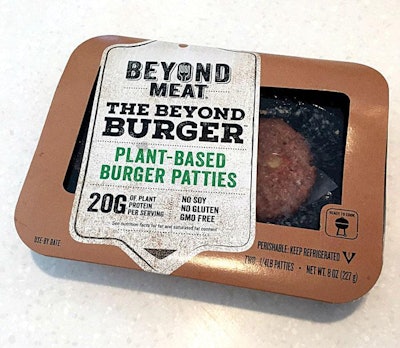
Will the rise of alternative proteins spell the end for poultry and other animal protein producers, or will it offer opportunities to premiumize product?
Like it or not, mass production and mass consumption of alternative proteins would appear to be drawing ever closer. According to research carried out on behalf of industry association Beef + Lamb New Zealand (B+LNZ), although alternative proteins many only currently be manufactured in small volumes, large scale production of burger patties and mince, for example, is likely to be a reality within five years.
And don’t think that it is simply more expensive red meat that is being decoupled from the animal; lab grown chicken is already under development.
B+LNZ commissioned research company Antedote to look at shifts in food, food production technology and consumer trends, to separate hype from reality, and so enable the association to develop a response.
Research was carried out across North America, Asia and Europe and, although focusing on the market for alternatives to red meat, the findings and conclusions make interesting reading for the wider animal protein industry.
Converging interests
Change is occurring on both the supply and demand sides, and the report identifies a number of key drivers.
These include governments having to not only respond to population increases and the health of their citizens, but also to climate change, and this may well result in additional regulatory measures effecting production and consumption of red meat, in particular.
The medical community is also starting to highlight the health risks of red meat, while promoting the benefits of plant-based proteins, the report notes. Similarly, athletes and other influencers are pushing the performance benefits of plant-based proteins.
The food industry is increasingly being shaped by the eating patterns of Millennials, the study found. Their social values, holistic wellness goals, prioritization of experience over product, and the sheer size of this group are all driving change.
It is also highlighted that Investors in alternative protein products are wealthy, and experienced in creating and marketing consumer brands.
Synthetic meat or natural?
Yet, despite these drivers, B+LNZ found that there is a potentially bright future for its members’ products.
The same forces driving the significant investment and demand for alternative proteins, including concerns about industrial farming, health and the environment, offer a chance to differentiate their red meat in international markets.
The B+NLZ report argues that free-range sheep and beef farming in New Zealand is a world away from intensive farming practices and “big food,” which has tarnished the reputation of red meat, and that this should be leveraged and competitive advantages rigorously protected.
Alternative proteins will have a place as the global population rises and demand for food increase, it believes, but so will grass fed, hormone-free, antibiotic free natural protein.
B+LNZ will now develop a strategy to help to safeguard its members, and which may prove interesting reading for red meat and poultry producers alike.
Some consumers will be happy to eat cultured meat, or other alternative proteins, and labelling stating “No chickens harmed” on product may hold a certain appeal. Other consumers may have no choice – lab produced meat from cells rather than animals may be the way to efficiently feed the world. Others, however, may still want to “eat natural,” making animal-derived product their meat of choice and see alternative proteins as simply to sci-fi to be palatable.
















